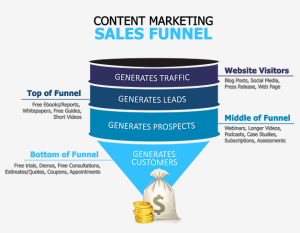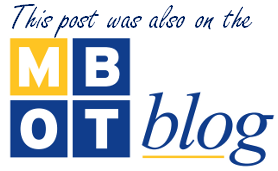I don’t think it’s possible to succeed at B2B content marketing without making good use of the sales funnel concept. It’s an indispensable tool.
Yet I constantly see businesses that haven’t correctly applied the sales funnel to their content marketing strategies, setting them up for failure.
It takes more than a general understanding of the need for content that will attract leads and “flow” them toward sales conversion. In content marketing, the sales funnel model gains its power only when it’s used to constantly adjust the content you offer based on how far down the funnel a lead is.
The Fu’s (ToFu, MoFu, and BoFu)
There are three basic stages of potential customers’ progress through the sales funnel:
- When they’re first becoming aware of how you can help them solve problems.
- When they’re learning and evaluating you against your competition and other options.
- When they’re ready to convert.
By tying those three stages to your content strategy, you can begin thinking about your content in three different categories, each with distinct purposes. You’ll then be able to send content that’s appropriate for the stage someone is in.

- Stage 1: Top of the Funnel (ToFu)—In this stage, you need content that builds awareness, generates demand, and converts prospects into leads. The focus is on education and beginning to build relationships, not overt promotion. Effective content in this stage includes:
- social media
- blogs
- infographics
- checklists
- short videos
- Stage 2: Middle of the Funnel (MoFu): Content in this stage should “nurture” leads, help them appreciate your value proposition, and move them toward sales-readiness. You’re demonstrating why they need what you’re offering and why you’re the best choice. Effective content in this stage includes:
- whitepapers/e-books
- how-to guides
- case studies
- webinars
- podcasts
- surveys/quizzes
- Stage 3: Bottom of the Funnel (BoFu): This content should address the specific needs of leads close to purchase. The purpose is to provide them with all the resources and support they need as they make their decision. Effective content in this stage includes:
- product/spec sheets
- demos
- customer testimonials
- FAQs
Despite the natural fit of certain content formats for certain stages, it’s important to realize that the content format isn’t the most critical consideration. Many formats (e.g., customer testimonials, videos, FAQs)—could be used effectively for ToFu, MoFu, and BoFu, and most formats can be used in multiple stages.
What matters most is the subject matter of the content: Is it relevant to where the potential customer is in the funnel?
You’ll need to determine the appropriate criteria for your company to use in gauging how far down the funnel a potential customer is. You’ll also need to be able to continually track the behavior of leads so that you can move them to the appropriate stage, a process for which you can use marketing automation software.
But it’s worth the effort. Without the sales tunnel framework, you’re treating all of your potential customers exactly the same, although they have very different content needs.



